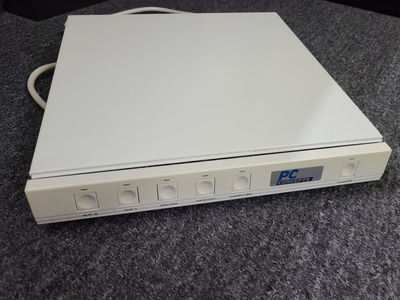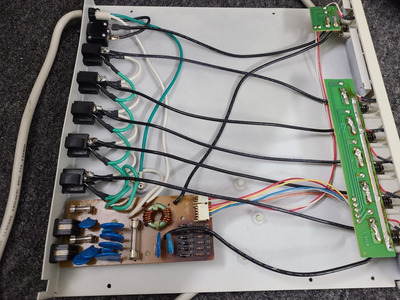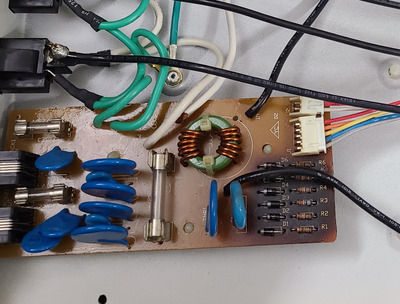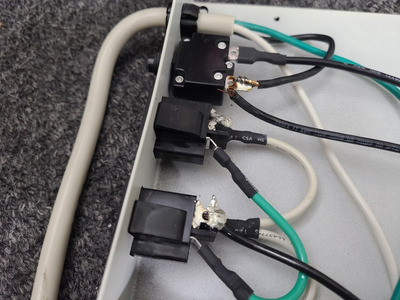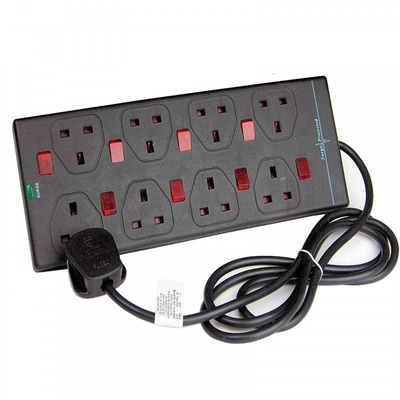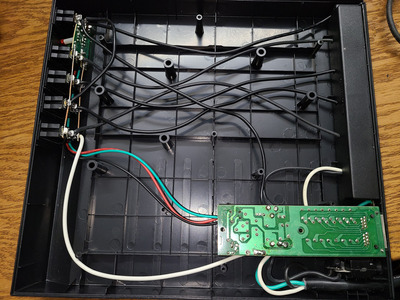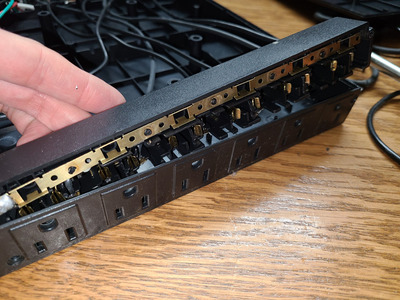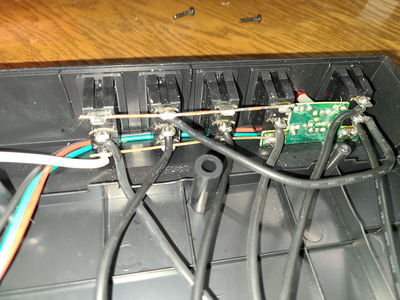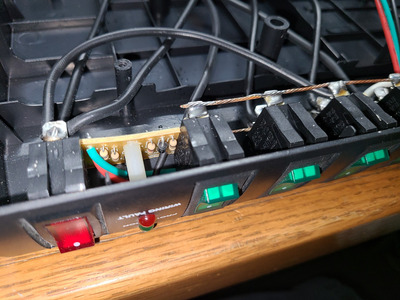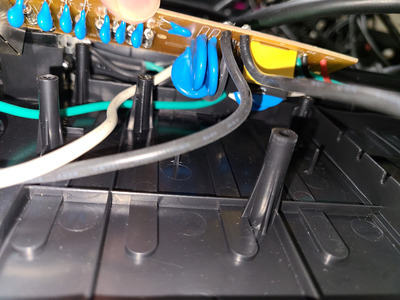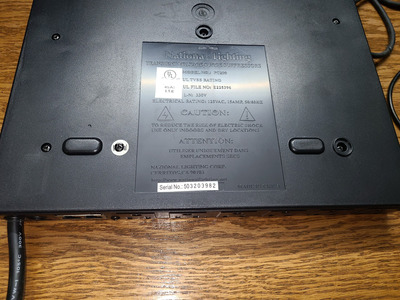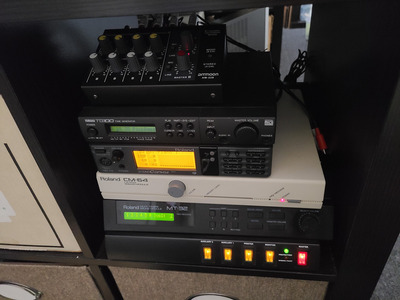First post, by Ozzuneoj
- Rank
- l33t
I figured I should post this here just in case anyone else is using these old things. I love the feel of the buttons and the flexibility they provide when running multiple old PCs, monitors and devices.
I did some work on an ~11 year old HP Elitedesk desktop several months ago, the PC turned on and ran but had some issues that required replacement parts and the owner decided to just let the machine go. They called me about a month ago and asked if I wanted the PC and peripherals so I said yes and they brought it over. It came with an older LCD and a decent looking "PC Concepts" power center. I didn't have an immediate use for the power center, but I actually have three other power centers that I use in various parts of my office right now, so I planned on keeping it as a spare at least.
(I had already opened it when this picture was taken)
Today, I was doing some tidying up and noticed that the metal panel on the back of the power center looked like it had been pushed in a little, so I figured I should take a look at the insides in case it had been damaged when the person brought it to me. I noticed the buttons had a really nice and satisfying feel to them and the unit was almost entirely metal... seemingly a decent piece of equipment.
Once I got it open, my jaw dropped...
There was a big cluster of resistors and diodes where the PCB had been so heat-damaged that it was nearly black. Several of the resistors were actually starting to crumble, and there was a big spot of dark soot on the top panel above this area. I followed some traces and it appears that these resistor+diode pairs connect to the tiny LEDs that indicate which buttons have power. I have no idea what would cause these to get so hot, but the owner had been using this thing for years and it was actually operating when I was at their home office helping them with the PC.
And it gets better!
I decided to just harvest a few parts from it and leave the rest for the scrap heap... making sure to avoid anything that might have been damaged or related to the LEDs. Basically, I just took the power cable, circuit breaker and the power switches + plastic caps. While moving things around inside the chassis I noticed that one of the black wires popped loose from the soldered outlet terminals in the back with very very little tension. I found several more terminals that looked solid because they had a big blob of solder, but the wire that went into it was freely spinning or moving around with a blob of solder on the end doing nothing but preventing it from pulling through the hole.
(black wire that had come loose from second plug, and black wire freely spinning around with blob of solder on the end on the third plug)
So, yeah... you can bet I'll be inspecting the other three power centers that I use. One of them I did inspect 5-6 years ago and it was fine (and probably at least 15 years older than this one), but the other two I have never bothered opening. This is equipment that looks fine on the outside but could be so poorly designed and assembled that it could be a ticking time bomb for your old gear or even worse, a massive fire hazard.
Please post here if you open one up and find anything worth mentioning, or find any that are extremely well constructed. I'm curious to know if others have similar issues.
I don't want to be presumptuous but if anyone else thinks this should be a sticky I wouldn't disagree with them. This is scary stuff.
Now for some blitting from the back buffer.
